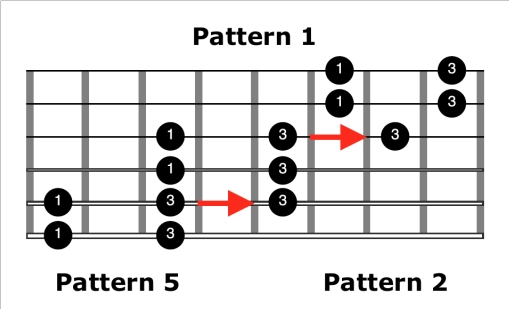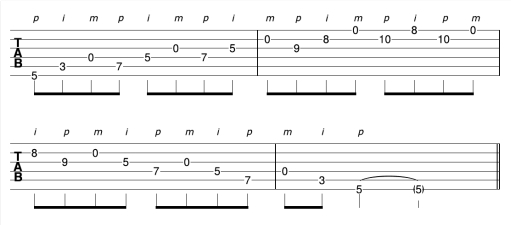In part 1 of this video series you learned a very unique way of integrating open strings into your solo lines on guitar. Today we will dig a little deeper and look at how we can take this technique and apply it to a very common scale pattern on the guitar that I am sure you know. Once we are done applying our open string technique to this pattern however, what you hear will be anything but common. I am going to show you how you can rip awesome blues solos using this very pattern, coupled with the open string approach learned in video 1.
In the first video we worked in the key of Em. This key worked well with our open string technique because all the open string notes exist in this key:
E F# G A B C D
The key we will use in video 2 will be Am. This too is a great key for open string playing because it also contains all the open string notes:
A B C D E F G
However not all keys will be compatible with this way of playing. There are others besides Em and Am, however because the open strings are constant, (ie. they don't change), many keys are not suitable simply because they don't have enough open string notes in them. When you find yourself in such a key the solution is simple, use a capo.
If you've been playing guitar for a while, the following pattern is one I'm sure you've seen and used before. It is a great pattern for blues playing, and in todays video we will be playing this pattern in Am.

However, we won't be playing the pattern as you've done before. Once we apply our open string technique to it, the result will be the following:

With this pattern and our open string approach applied, you can now move horizontally across the fretboard, not just vertically up and down, opening up many more possibilities with your open string soloing.
To learn how to create this scale in detail, watch the video. You will also hear this scale being applied musically over a blues in A. The result is some pretty awesome and unique sounding solo lines that are sure to immediately grab the attention of anyone hearing you play. I will also demonstrate how this technique seamlessly integrates into your everyday riffs and licks you play so it's there to use whenever you want.
For more creative ways to play guitar, check out this free ebook/audio download on how to spice up your guitar solos using open strings.
Specializing in online acoustic guitar lessons, Simon Candy is based in Melbourne, Australia where he runs his own guitar school.